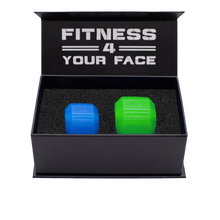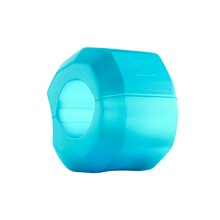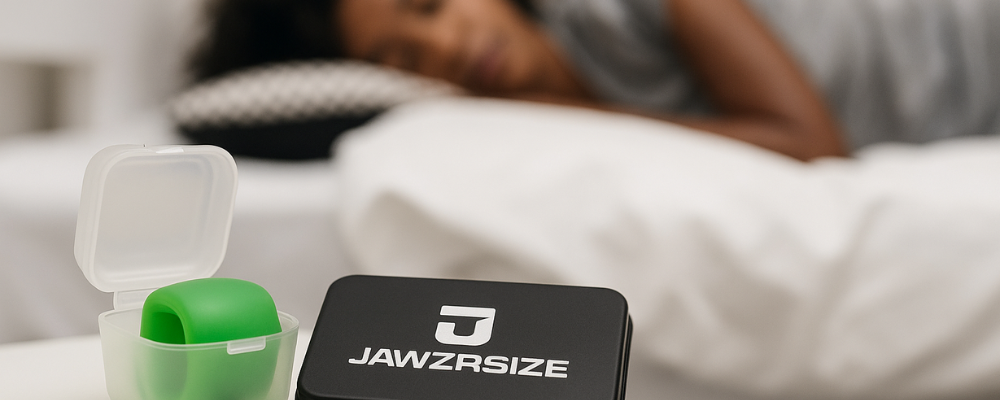Looking in the mirror is one of the first things we do when we get up each morning. We notice our eyes, nose, and jaw. The jaw is one of the most prominent points of the face. Due to its prominence, it greatly impacts our overall appearance, how we see ourselves, and how others see us.
A weak jaw is noticeable precisely because the chin is one of the face’s focal points. Weak jaws often create an unbalanced facial appearance. The chin may appear smaller, distorting other facial features such as the lips. When the jaw is weak, the upper lip may appear to protrude from the face disproportionately.
Nobody’s immune from having a weak jaw. It could be caused by genetics, aging, or the result of an accident. A weak jaw becomes a problem when it interferes with your daily activities such as eating and drinking. Having a weak jaw may also negatively impact a person’s self-confidence.
If you have a weak jaw, you‘ve come to the right place. In this article we will explain what a weak jaw is and how you can improve it.
What Is a Strong Jawline Vs a Weak Jawline?
The first thing we notice about another person is their face. We may not consciously take note of another person’s jawline, but it is not easily overlooked. Jawlines, whether weak or strong, are one of the faces most important features.
Jawlines are usually categorized into one of two ways, strong or weak. Let’s take a closer look at how weak jawlines versus strong jawlines are defined.
Strong Jawline
A square or rectangular face is what typically comes to mind when we think of a strong jawline. The jawline is how your jawbone appears externally on your face. A person with a well-defined external jawbone is considered to have a strong jawline.
Weak Jawline
In contrast, a weak jawline, also called a weak jaw, soft jaw, or weak chin, is not well-defined. A weak jawline is often characterized by a receding chin, with the chin set back from the face. The edge of the chin may be round, puffy, or plump. Excess fat in the chin area also contributes to a weak jawline.
Possible Causes of a ‘Weak’ Jaw
A weak jaw has diverse causes. If you are concerned about having a weak jaw, pinpointing the cause will help you identify the best methods for improving your jawline's appearance.
GeneticsMost of our physical features are heavily influenced by genetics. One of the primary causes of a weak jaw is genetics. A person may inherit a weak chin from their parents or grandparents.
In 2004, US scientists discovered a genetic mutation that may have caused humans to develop weak chins. The theory is that humans evolved to have smaller chins to allow space for bigger brains to develop.
AgingThe aging process brings dramatic changes to the body, and our chins aren't immune. As we age, fat often accumulates under the chin and jawline. A lack of collagen and elastin makes the skin less taut.
As these changes occur, neck muscles become weaker, causing the skin to droop. The result is two of the most common signs of aging: double chins or jowls.
The face's bone structure also changes with age, with the jaw's angle increasing. This change causes reduced definition in the lower part of the face.
Excess WeightAccumulated fat in the lower face is a common cause of weak jaw. Even slight weight gain can reduce the appearance of the jawbone. Fat and skin from excess weight can make the jawline nearly invisible.
Thumb SuckingParents may be onto something when they discourage their children's thumb-sucking. This childhood habit could contribute to the development of a small chin. Thumb sucking may prevent the jaw from developing normally.
Thumb sucking has the biggest negative impact on the jawline when done vigorously and habitually in childhood.
Weak ChewingEating soft foods as a child may also weaken your jaw. An overbite or underbite may also contribute to a weak chin. These conditions make it difficult to chew, and the lack of chewing causes the jawbone to weaken.
Can You Change a Weak Jaw with Exercise?
Whatever the cause of your weak jaw, there are exercises that can help improve your jawline's appearance. These exercises build up the muscles in your jaw and face, giving your jawline a more defined look.
- Clenching: Insert a mouthguard made by your dentist (not a sports mouthguard) and hold your teeth together tightly for 3 seconds. Complete 3 to 10 sets daily.
- Vowel Sounds: Open your mouth in an exaggerated manner, saying OO-EE and OO-AA. Complete 3 to 10 sets daily. This targets the muscles around your mouth.
- Neck Curl Up: While lying on your back with your tongue pressed to the roof of your mouth, bring your chin up to your chest then lift your head about 2-inches off the ground. Complete 3 to 10 sets daily.
- Chinup: With your mouth closed, slide your lower jaw out while you lift your bottom lip. Be sure you can feel a stretch build under your chin and jawline. Complete 3 to 10 sets daily.
Final Thoughts

A weak jaw happens when a person's jawline isn't well-defined. A weak jawline isn't a medical problem unless it interferes with a person's ability to eat or drink. Although we can't change our genetics or stop aging, there are things we can do to improve a soft jawline.
Maintaining a healthy body weight will decrease the likelihood of fat concealing your jawline. Chewing hard foods will increase the load on your jaw, allowing it to become stronger. Jaw strengthening exercises and workout systems can also build jaw strength, resulting in more definition.
No matter how much we may try to think otherwise, appearance is important. Our face is the first thing people notice, and strong jawlines are associated with attractiveness, health, and confidence. If you're worried about a weak jawline, you now have the knowledge and some tools to help you reshape your chin.







